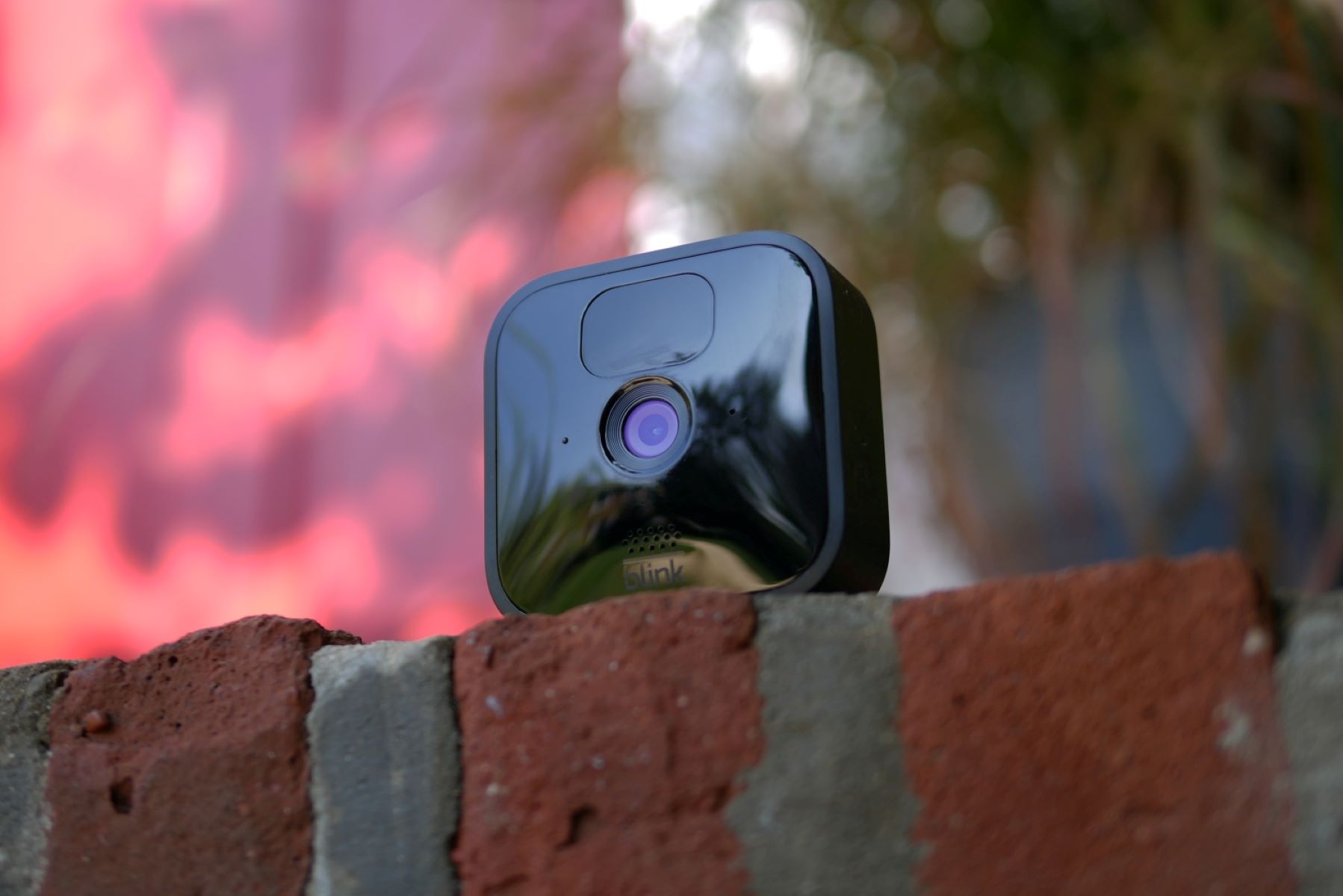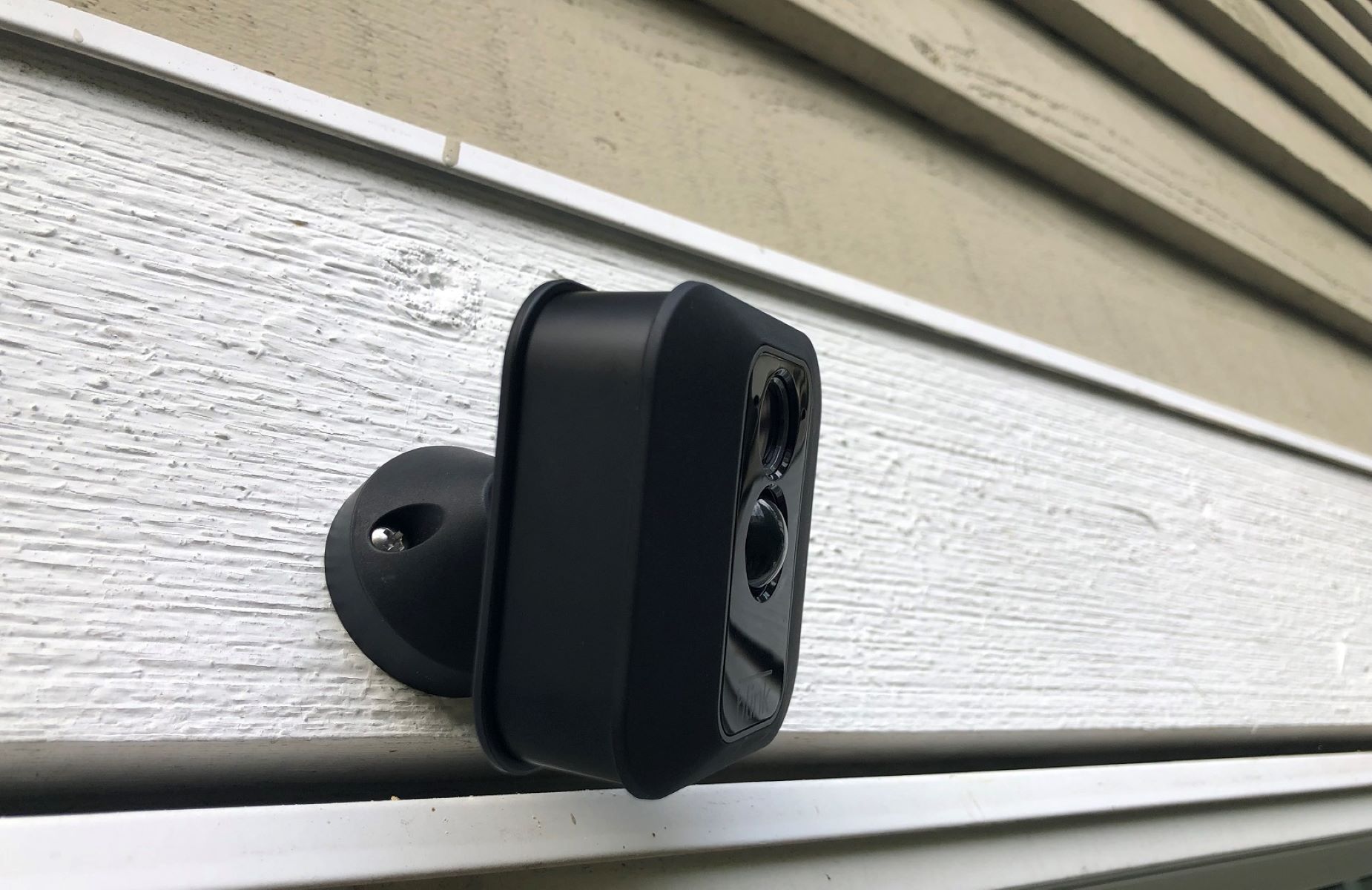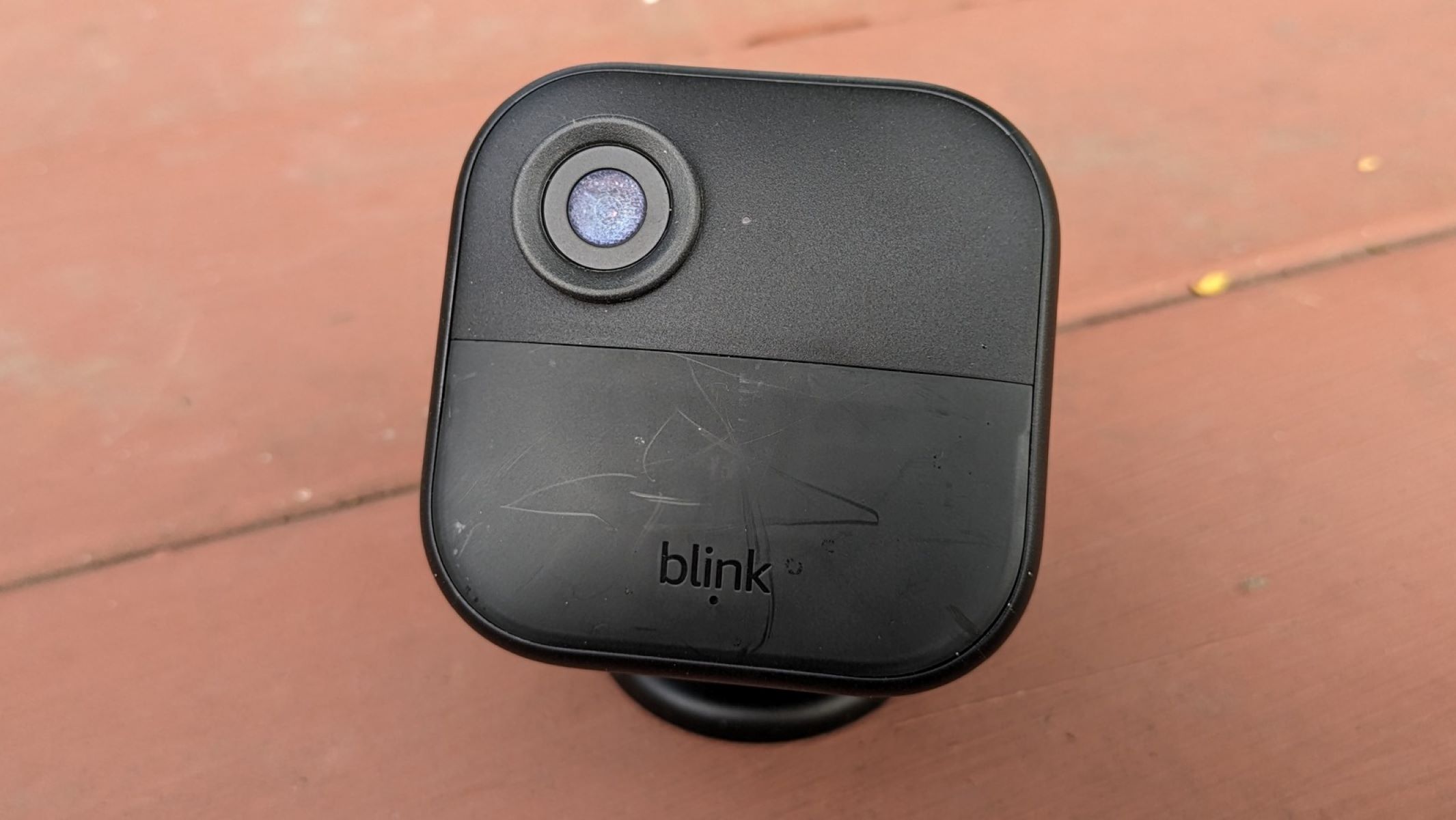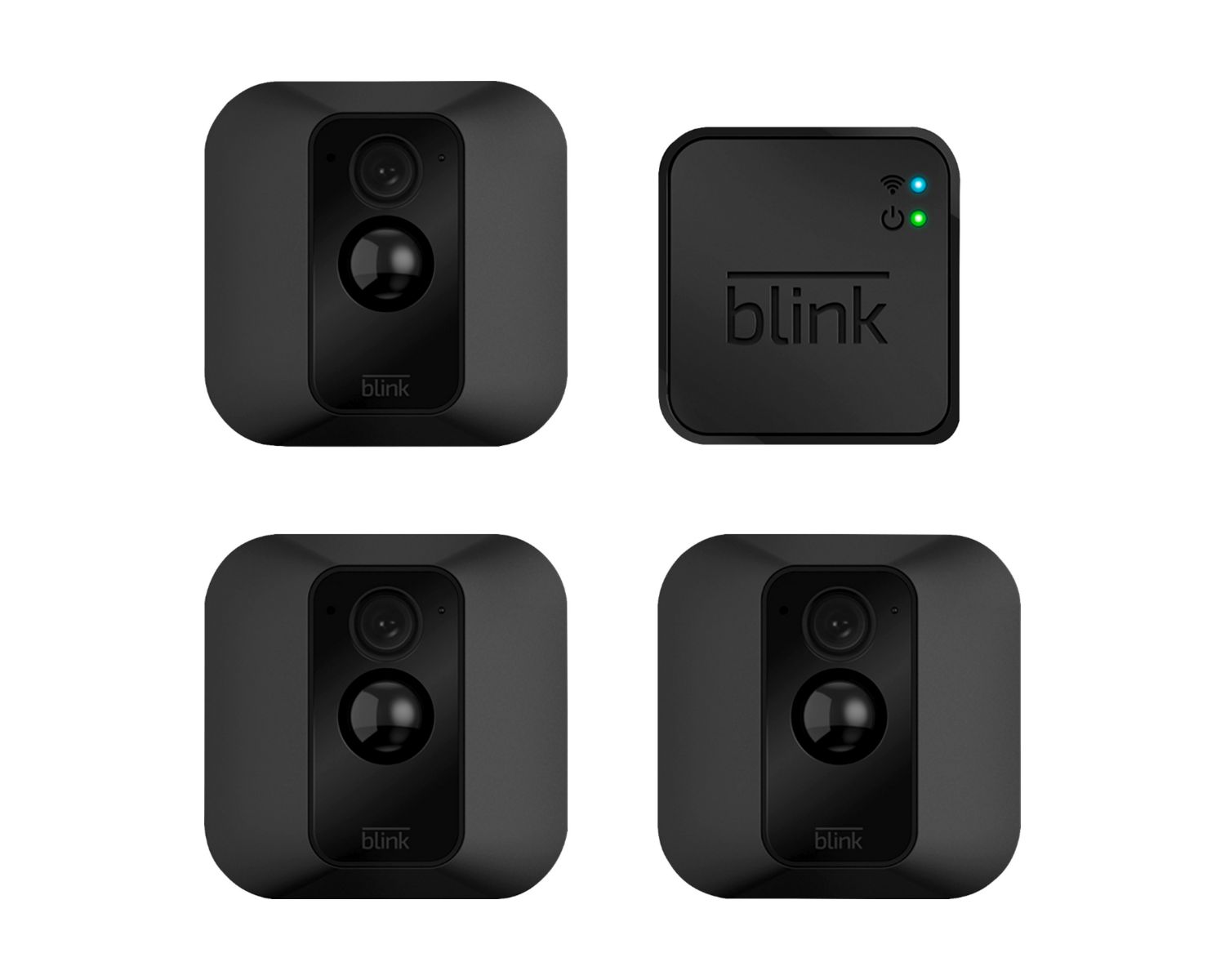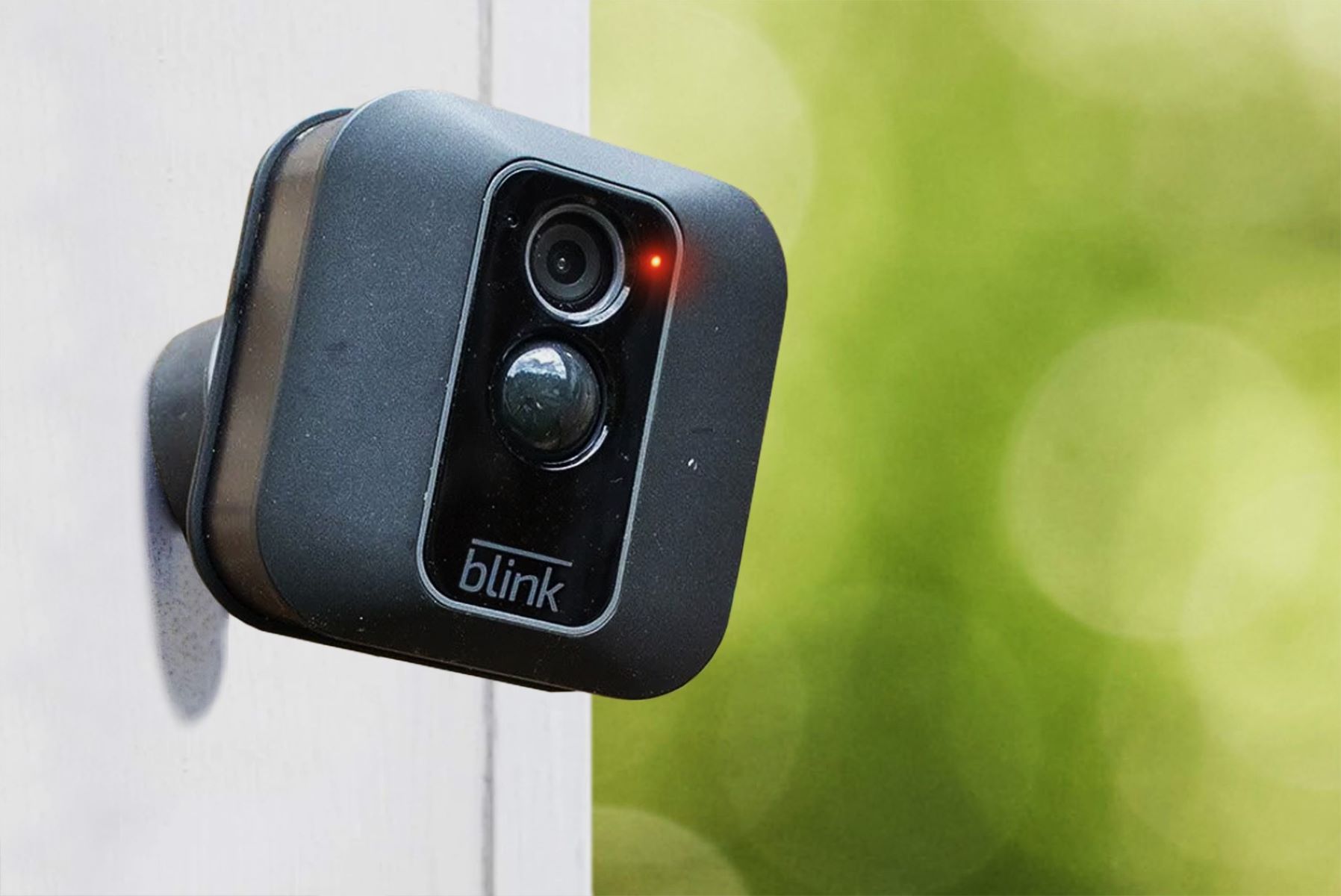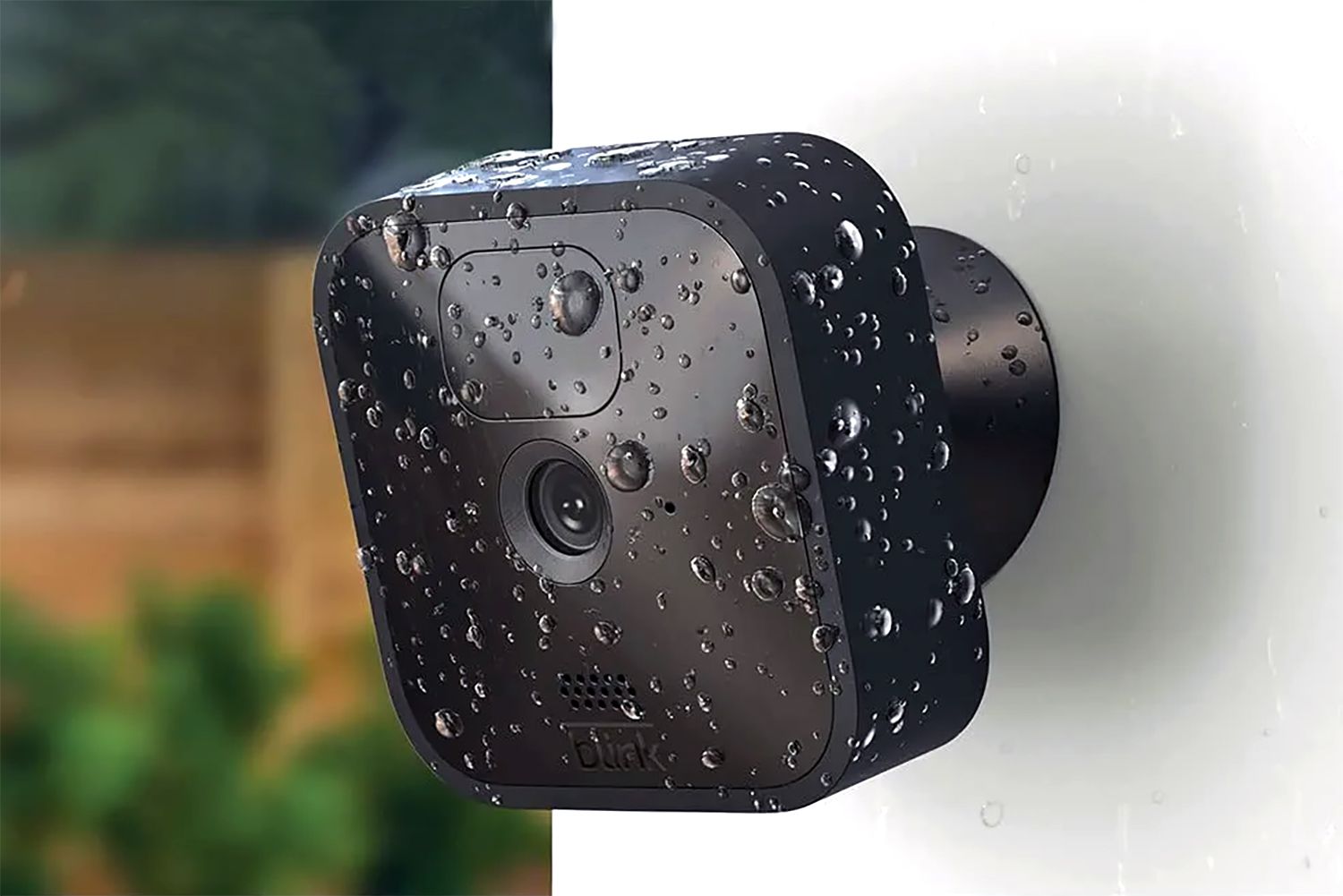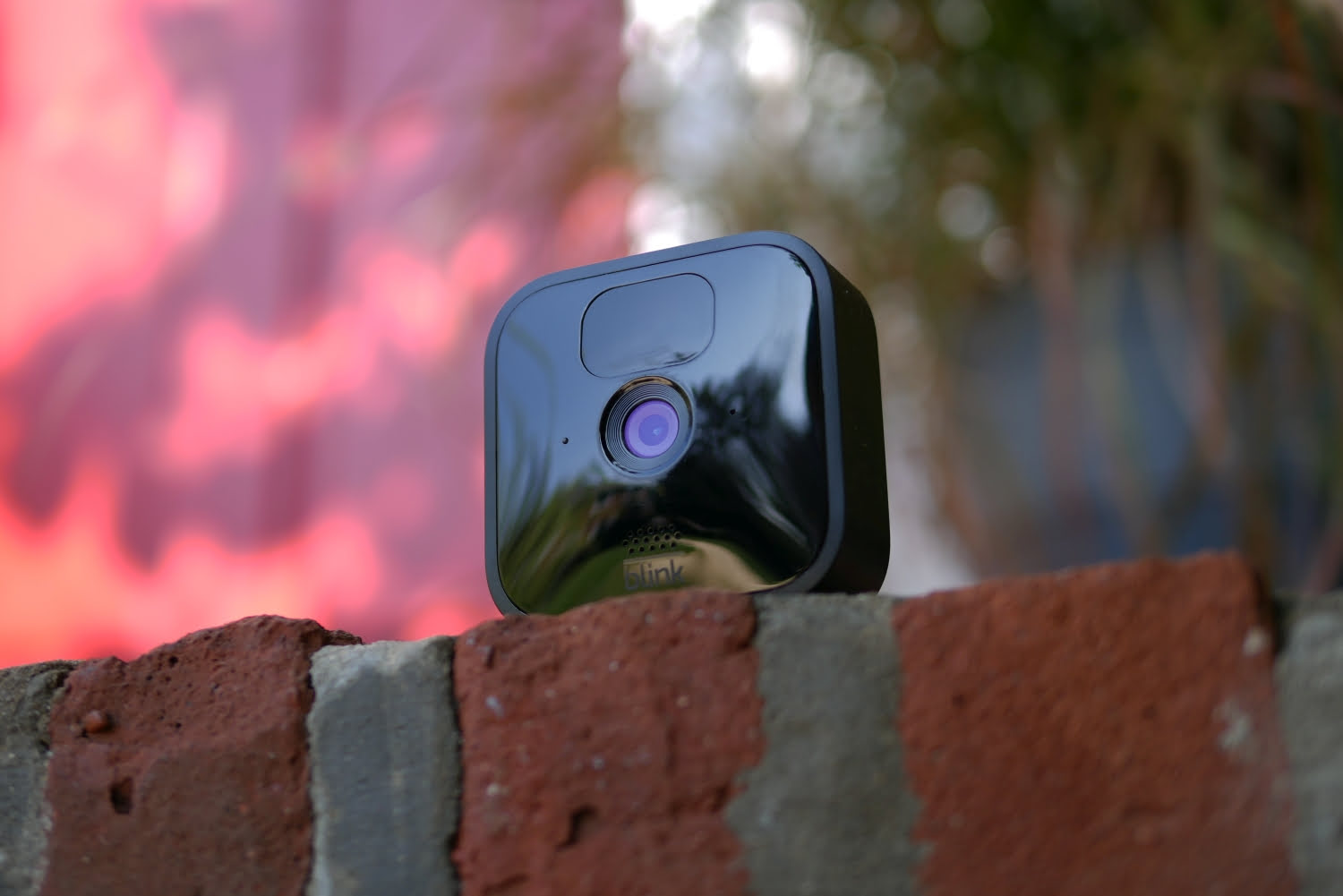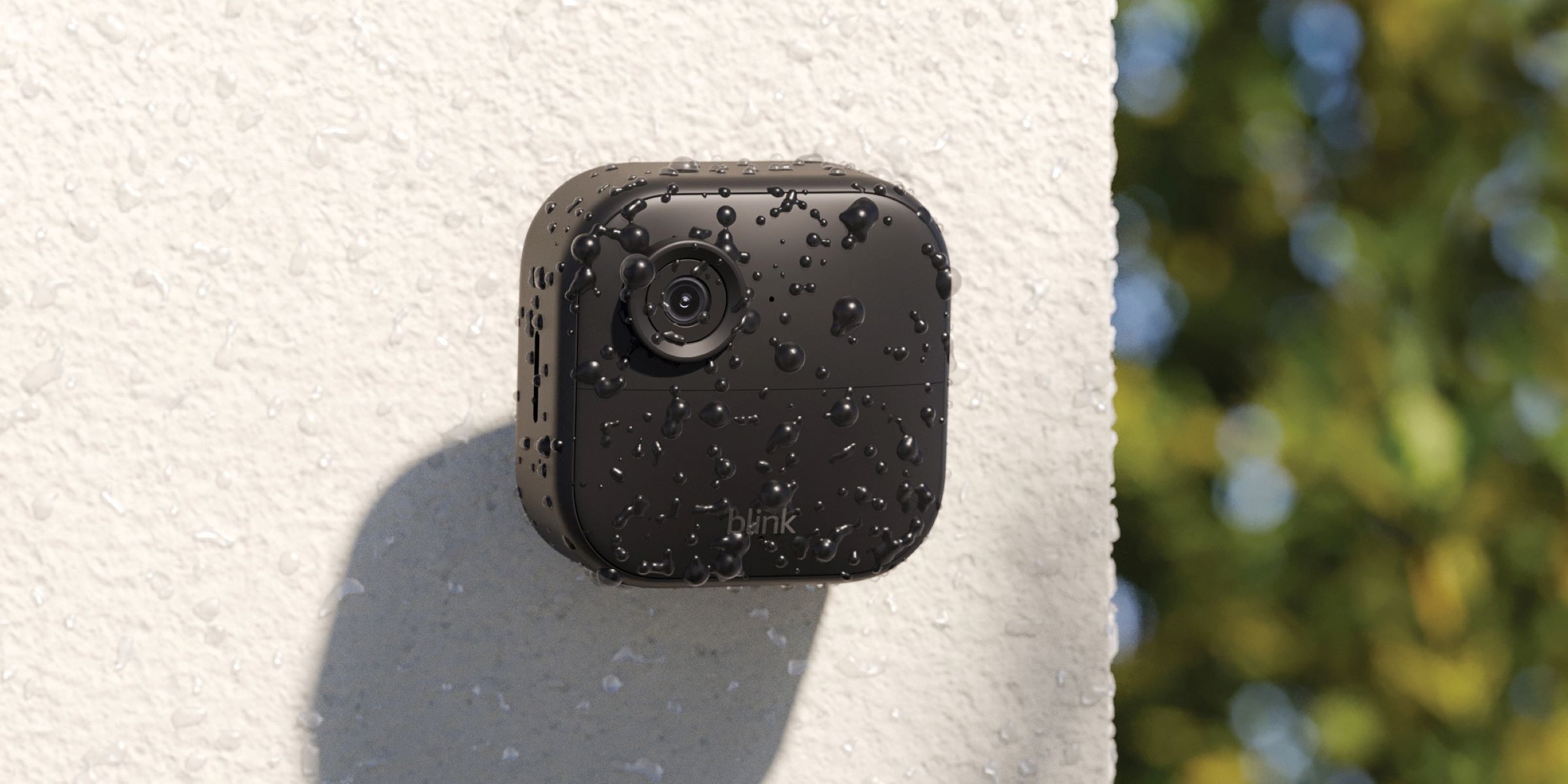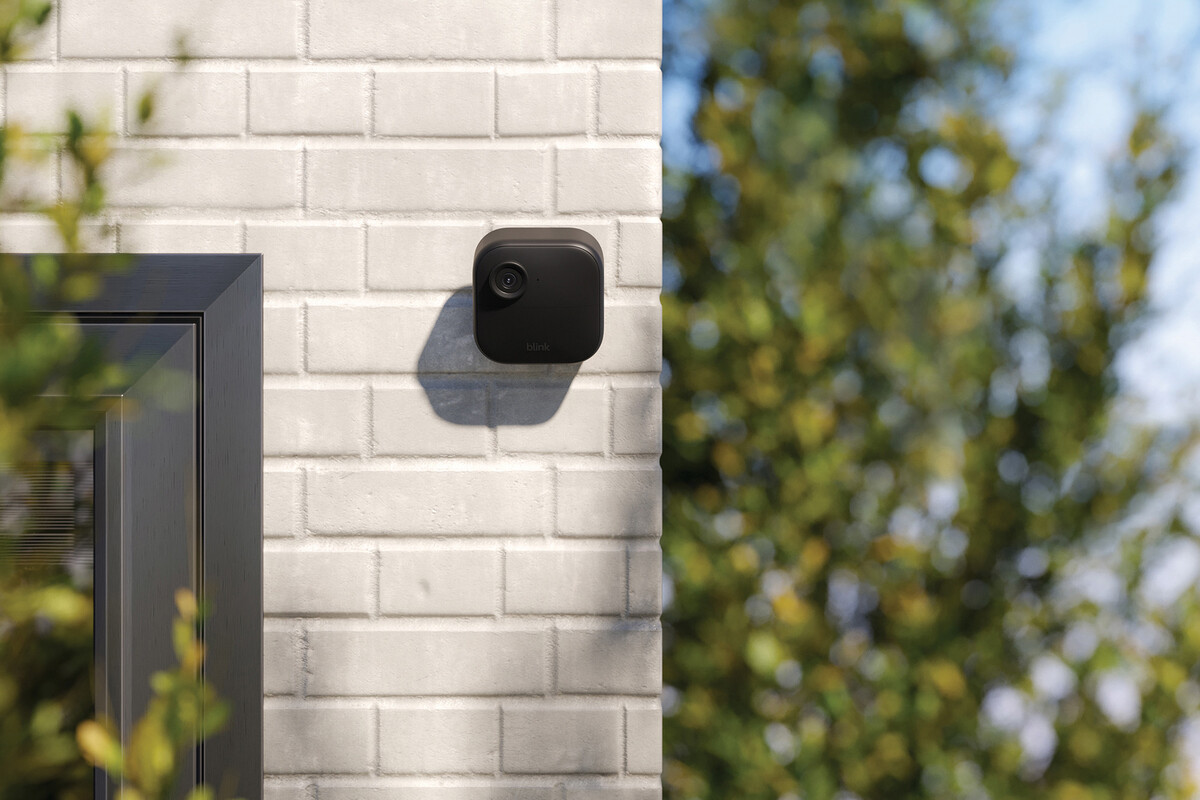Home>Home Security and Surveillance>How Do Blink Outdoor Cameras Work
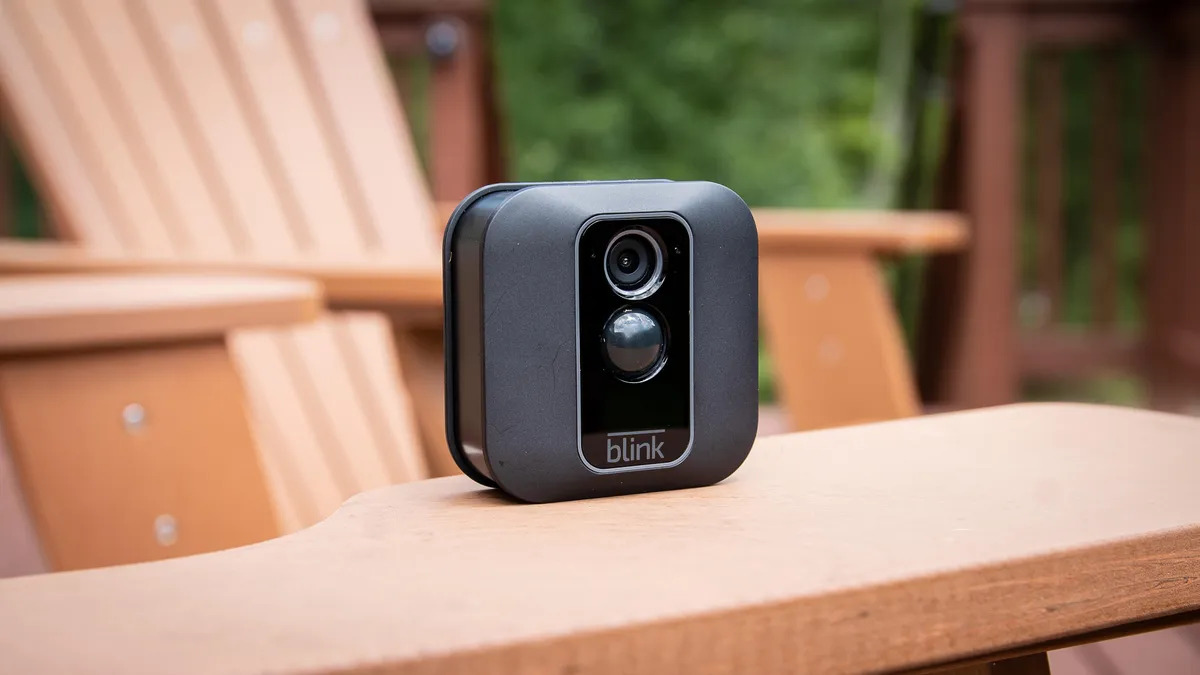

Home Security and Surveillance
How Do Blink Outdoor Cameras Work
Modified: October 29, 2024
Discover how Blink Outdoor Cameras work to enhance your home security and surveillance. Easy setup, motion detection, and live view capabilities ensure peace of mind.
(Many of the links in this article redirect to a specific reviewed product. Your purchase of these products through affiliate links helps to generate commission for Storables.com, at no extra cost. Learn more)
Introduction
Home security is a top priority for homeowners, and advancements in technology have revolutionized the way we protect our homes and loved ones. One of the most popular and reliable options in home security systems is the use of outdoor cameras. Among the wide range of outdoor cameras available in the market, the Blink Outdoor Cameras stand out as a top choice for many homeowners.
In this article, we will dive deep into the world of Blink Outdoor Cameras, exploring their key features, installation process, and most importantly, how they work to provide effective surveillance for your home.
Understanding the inner workings of Blink Outdoor Cameras is essential to ensuring the utmost security for your property. So, let’s explore the fascinating technology behind these cameras and how they can help safeguard your home.
Key Takeaways:
- Blink Outdoor Cameras offer hassle-free installation, high-quality video, and extended battery life, making them a reliable and convenient choice for home security. Their wireless design and weatherproof construction ensure easy placement and durability.
- With motion detection technology, live view capabilities, and cloud storage options, Blink Outdoor Cameras provide comprehensive surveillance for your home. Customizable settings and integrations with Amazon Alexa and IFTTT enhance their functionality and convenience.
Read more: How Does The Blink Outdoor Camera Work
Understanding Blink Outdoor Cameras
Blink Outdoor Cameras are known for their advanced features and user-friendly interface, making them a popular choice for homeowners seeking reliable surveillance solutions. Let’s take a closer look at some of the key features that set Blink Outdoor Cameras apart from the competition.
Key Features of Blink Outdoor Cameras
- Wireless Design: Blink Outdoor Cameras are completely wireless, eliminating the need for complex wiring and making installation a breeze. You can place the cameras anywhere around your property and easily move them if needed.
- High-Quality Video: These cameras boast high-definition video quality, ensuring clear and crisp visuals. Whether it’s capturing details of a suspicious person or recording important events, Blink Outdoor Cameras deliver exceptional video clarity.
- Weatherproof: Designed to withstand outdoor conditions, Blink Outdoor Cameras are weatherproof and resistant to rain, snow, and extreme temperatures. This durability ensures reliable performance even in harsh weather conditions.
- Extended Battery Life: Blink Outdoor Cameras are equipped with long-lasting batteries, allowing them to operate for up to two years before needing a replacement or recharge. This eliminates the hassle of constantly changing batteries.
- Smart Notifications: With the Blink mobile app, you’ll receive instant notifications on your smartphone whenever motion is detected. This enables you to stay updated on any activity around your property, giving you peace of mind.
Installation and Setup
Setting up Blink Outdoor Cameras is a hassle-free process that can be completed in a matter of minutes. Here’s a step-by-step guide to help you get started:
- Download the Blink App: Begin by downloading the Blink app on your smartphone or tablet. The app is available for both iOS and Android devices and can be found in the respective app stores.
- Create an Account: Open the Blink app and create a new account. This will allow you to access and control your Blink Outdoor Cameras from anywhere in the world.
- Add Cameras: Follow the on-screen instructions to add your Blink Outdoor Cameras to your account. This usually involves scanning a QR code on the camera or entering a unique serial number.
- Place the Cameras: Find suitable locations around your property to mount the Blink Outdoor Cameras. These can include entry points, driveways, and backyard areas. Ensure that the cameras have a clear view of the area you want to monitor.
- Sync Module Setup: The Blink system utilizes a sync module that acts as a bridge between your cameras and the Blink app. Connect the sync module to your home’s Wi-Fi network and follow the in-app instructions to complete the setup.
- Customize Settings: Once the cameras and sync module are set up, you can customize various settings such as motion sensitivity, detection zones, and notification preferences. This allows you to tailor the system to your specific needs and preferences.
By following these simple steps, you can have your Blink Outdoor Cameras up and running, providing reliable surveillance for your home in no time.
How Blink Outdoor Cameras Work
Understanding how Blink Outdoor Cameras work is essential to fully utilize their capabilities and ensure effective surveillance for your home. Let’s explore the key aspects of their functionality:
Read more: How Does Blink Outdoor Camera Work
Motion Detection Technology
Blink Outdoor Cameras are equipped with advanced motion detection technology that allows them to detect any movement within their field of view. When the camera detects motion, it automatically starts recording and sends notifications to your smartphone via the Blink app.
This motion detection technology is highly customizable, allowing you to adjust the sensitivity level to avoid false alarms. By fine-tuning the settings, you can ensure that the cameras only capture relevant activities, such as people approaching your doorstep or vehicles entering your driveway.
Live View and Video Streaming
One of the key features of Blink Outdoor Cameras is the ability to access a live view and stream video footage directly from your smartphone or tablet. Using the Blink app, you can remotely view the camera feed in real-time, allowing you to monitor your property from anywhere in the world.
This live view feature is incredibly useful for keeping an eye on your home while you’re away or checking on the well-being of your loved ones. Whether you’re at work, on vacation, or running errands, you can have peace of mind knowing that you can always access the live feed of your Blink Outdoor Cameras.
Cloud Storage and Backups
Blink Outdoor Cameras offer cloud storage options to securely store your video recordings. The cameras come with a free trial of Blink’s cloud storage services, where video clips are stored for up to 7 days. If you require longer storage periods or additional features, such as sharing and downloading videos, Blink offers subscription plans for extended cloud storage.
The cloud storage feature adds an extra layer of security to your surveillance system. In the event of a power outage or camera theft, your video footage remains safely stored in the cloud, ensuring that no important evidence is lost.
Additionally, Blink Outdoor Cameras provide a backup option by enabling local storage through the use of a USB flash drive or a removable storage device. This allows you to have a physical copy of your video footage, providing an additional level of redundancy for your data.
With motion detection technology, live view capabilities, and cloud storage options, Blink Outdoor Cameras offer a comprehensive and reliable surveillance solution for your home. By leveraging these features, you can confidently monitor your property and ensure the safety and security of your loved ones.
Power Source Options
When it comes to powering your Blink Outdoor Cameras, you have several options to choose from. Each option offers its own advantages and considerations, allowing you to select the power source that best suits your needs and preferences. Let’s explore these power source options:
Read more: How To Install Blink Outdoor Cameras
Battery-powered Cameras
Blink Outdoor Cameras are designed to be battery-powered, offering flexibility and convenience in terms of camera placement. The cameras come with long-lasting batteries that can last up to two years before needing a replacement or recharge. This eliminates the need for complex wiring and allows you to easily move the cameras around your property as needed.
The battery-powered option is particularly popular for those who want a hassle-free installation process and the freedom to place the cameras in optimal locations without being limited by available power outlets. Additionally, the low energy consumption of Blink Outdoor Cameras ensures efficient use of the batteries, allowing them to last for extended periods.
Wired Cameras
In addition to battery-powered options, Blink offers wired cameras for those who prefer a continuous power supply. With wired cameras, you don’t have to worry about battery replacements or recharging. The cameras can be powered through an electrical outlet using the included power adapter.
Wired cameras are a great choice for those who want a reliable and uninterrupted power source. This option is especially useful for areas where constant surveillance is required, such as high-traffic locations or areas prone to vandalism. However, it’s important to consider the availability of power outlets and the potential limitations in camera placement when opting for wired cameras.
Solar Panel Integration
For environmentally-conscious homeowners looking to harness renewable energy, Blink offers a solar panel integration option for their outdoor cameras. By installing the Blink Solar Panel, you can provide a continuous power supply to your cameras while reducing your carbon footprint.
The solar panel absorbs sunlight and converts it into electricity to power the cameras. This not only eliminates the need for batteries or wired connections but also ensures that your cameras remain operational even in extended periods of sunlight deprivation.
Solar panel integration is a viable option for those who want a sustainable and long-term power solution, especially in areas with ample sunlight. It offers cost savings on battery replacements and reduces dependence on traditional power sources.
Consider your specific requirements and the available resources when choosing the power source for your Blink Outdoor Cameras. Whether you opt for battery-powered cameras, wired connections, or solar panel integration, rest assured that Blink provides versatile options to suit your individual preferences.
Connectivity Options
Connectivity is a crucial aspect of any modern home security system, and Blink Outdoor Cameras offer seamless connectivity options to ensure reliable surveillance for your property. Let’s explore the two primary connectivity options available with Blink Outdoor Cameras: Wi-Fi connection and the Sync Module.
Read more: How To Unscrew Blink Outdoor Camera
Wi-Fi Connection
Blink Outdoor Cameras are designed to connect to your home’s Wi-Fi network, providing a convenient and reliable way to transmit data. By connecting to your Wi-Fi network, the cameras can communicate with the Blink app on your smartphone or tablet, allowing you to remotely monitor your property.
Setting up a Wi-Fi connection with your Blink Outdoor Cameras is a straightforward process. Simply log into the Blink app, go to the camera settings, and follow the prompts to connect the cameras to your home’s Wi-Fi network. Once connected, the cameras will communicate with the Blink app over the Wi-Fi connection, enabling real-time video streaming and remote access.
It’s important to ensure a strong and stable Wi-Fi signal in the areas where you plan to install the Blink Outdoor Cameras. A reliable Wi-Fi connection will ensure smooth video streaming, quick notifications, and seamless access to your camera feeds.
Sync Module
The Sync Module plays a vital role in the connectivity of your Blink Outdoor Cameras. Acting as a bridge between your cameras and the Blink app, the Sync Module enables communication and synchronization of data.
During the initial setup process, the Sync Module needs to be connected to both a power source and your home’s Wi-Fi network. You’ll place the Sync Module in a central location within the range of your Wi-Fi signal and connect it to a power outlet using the included power adapter.
The Sync Module communicates with the Wi-Fi network and pairs with the Blink Outdoor Cameras. Once the connection is established, the Sync Module serves as the hub for managing and controlling the cameras. It allows you to access the live view, receive motion detection notifications, and adjust settings for your Blink Outdoor Cameras.
It’s essential to ensure that the Sync Module is placed within range of your Wi-Fi router to maintain a strong and stable connection. This will ensure uninterrupted communication between the cameras, the Sync Module, and your smartphone or tablet via the Blink app.
By utilizing the Wi-Fi connection and the Sync Module, Blink Outdoor Cameras offer a seamless and reliable connectivity experience. The combination of these two connectivity options ensures smooth operation and allows you to conveniently monitor and control your cameras from anywhere at any time.
Customizing Camera Settings
One of the key advantages of Blink Outdoor Cameras is the ability to customize and fine-tune various settings according to your specific needs and preferences. By customizing these settings, you can optimize the performance of your cameras and ensure that they capture the relevant activity around your property. Let’s explore two essential settings that you can customize: sensitivity and detection zones, and scheduling and arming modes.
Sensitivity and Detection Zones
The sensitivity and detection zones settings allow you to control how your Blink Outdoor Cameras respond to motion detection. You can adjust the sensitivity level to ensure that the cameras capture the desired activity while avoiding unnecessary recordings and false alarms.
If you find that your cameras are capturing too much motion, such as small animals or passing cars, you can decrease the sensitivity level to narrow down the detection range. On the other hand, if you want your cameras to capture even slight movements, you can increase the sensitivity level to expand the detection range.
In addition to sensitivity, Blink Outdoor Cameras also allow you to define specific detection zones. This feature enables you to select specific areas within the camera’s field of view where you want motion to trigger notifications and recordings. By configuring detection zones, you can exclude areas like busy roadways or neighboring properties from triggering alerts, focusing solely on the critical areas you want to monitor.
Read more: How Do Ring Outdoor Cameras Work
Scheduling and Arming Modes
Blink Outdoor Cameras provide the flexibility to set up schedules and arming modes to suit your lifestyle and security preferences. With scheduling, you can determine specific times during which your cameras should be active and monitoring for motion.
For example, if you prefer to have your cameras active only during nighttime when you’re asleep or away from home during the day, you can set a schedule accordingly. This not only conserves battery life but also prevents unnecessary notifications during times when activity is expected.
Arming modes allow you to quickly switch between different security setups depending on your needs. Blink Outdoor Cameras offer three arming modes: armed, disarmed, and schedule. In armed mode, your cameras are active and will detect and record any motion they detect. In disarmed mode, the cameras are deactivated, and no motion detection or recording takes place. The schedule mode follows the predefined schedule you set.
Customizing the arming mode enables you to adapt your camera’s behavior to different scenarios. For example, you may choose to have the cameras armed when you’re on vacation but disarmed when you’re at home.
By taking advantage of the sensitivity and detection zones settings, as well as scheduling and arming modes, you can personalize the functionality of your Blink Outdoor Cameras to match your specific requirements. This level of customization ensures that your cameras effectively monitor the areas you deem important while minimizing false alarms and unwanted recordings.
Integrations and Compatibility
Blink Outdoor Cameras offer a range of integrations and compatibility options to enhance their functionality and convenience. These integrations allow you to seamlessly control and monitor your cameras using other smart devices and platforms. Let’s explore the key integrations and compatibility options available with Blink Outdoor Cameras.
Blink App and Control Hub
The Blink app serves as the central control hub for managing and controlling your Blink Outdoor Cameras. Available for both iOS and Android devices, the app provides a user-friendly interface that allows you to access camera feeds, customize settings, receive notifications, and review recorded footage.
The Blink app is designed to provide a seamless and intuitive experience, ensuring that you can effortlessly navigate through various camera settings and features. With the ability to access the app from anywhere in the world, you have complete control over your surveillance system at your fingertips.
Works with Amazon Alexa
Blink Outdoor Cameras integrate seamlessly with Amazon Alexa, offering voice control capabilities to enhance your home security experience. By connecting your Blink cameras to Alexa, you can simply use voice commands to view live feeds, arm or disarm your cameras, or check the status of camera batteries.
This integration with Amazon Alexa brings even greater convenience and accessibility to your Blink Outdoor Cameras. Whether you’re at home or away, you can effortlessly control and monitor your cameras using voice commands, making home security management even more intuitive and hands-free.
Read more: How To Charge A Blink Outdoor Camera
IFTTT Integration
Blink Outdoor Cameras also integrate with IFTTT (If This, Then That), a popular automation platform that allows you to create custom workflows and connections between different smart devices and services. With Blink’s IFTTT integration, you can create powerful automation routines to enhance the functionality of your cameras.
For example, you can set up a routine that automatically turns on your Blink Outdoor Cameras when your smart door lock is activated or receive notifications on your smartwatch when motion is detected by your cameras. The IFTTT integration opens up a world of possibilities to create personalized and automated interactions between your Blink cameras and other compatible devices.
By leveraging the integrations and compatibility options provided by Blink Outdoor Cameras, you can extend the capabilities of your surveillance system and seamlessly integrate it into your smart home ecosystem. Whether it’s through the Blink app, Amazon Alexa voice commands, or IFTTT automation, these integrations enhance the usability and convenience of your Blink Outdoor Cameras.
Troubleshooting Common Issues
While Blink Outdoor Cameras are known for their reliable performance, occasionally, you may encounter some common issues. Understanding how to troubleshoot these issues can ensure that your cameras continue to function optimally. Let’s explore three common issues that users may face with Blink Outdoor Cameras and how to resolve them: connectivity problems, camera offline, and false alarms.
Connectivity Problems
Connectivity issues may arise when the Blink Outdoor Cameras are unable to establish a stable connection to your Wi-Fi network. If you’re experiencing frequent connectivity problems, consider the following troubleshooting steps:
- Ensure that your Wi-Fi network is working correctly by checking other devices connected to the same network.
- Check the signal strength of your Wi-Fi network in the area where the cameras are installed. Weak Wi-Fi signals can cause intermittent connectivity issues. Consider using Wi-Fi range extenders to improve the coverage in the specific areas.
- Restart your Wi-Fi router and the Blink Sync Module to refresh the connection. Sometimes, a simple reboot can resolve connectivity problems.
- If you’ve recently changed your Wi-Fi network name or password, make sure to update the Wi-Fi settings in the Blink app to reflect the changes.
- If all else fails, try resetting the Blink Sync Module and reconfiguring the cameras’ Wi-Fi connection from scratch.
Camera Offline
If your Blink Outdoor Camera appears offline and you’re unable to access the live view or receive motion detection notifications, here are some troubleshooting steps you can take:
- Check that the camera is powered on and has a stable connection to the Blink Sync Module. Ensure that the camera’s batteries are properly installed and have sufficient charge.
- Make sure that the Blink Sync Module is connected to a power source and has a solid Wi-Fi connection. Verify that the Sync Module is within range of both the Wi-Fi router and the camera.
- If the camera is still offline, try to remove and re-insert the batteries or power cycle the camera by turning it off and on again.
- If the issue persists, consider re-syncing the camera with the Blink Sync Module. Follow the steps in the Blink app to remove and re-add the camera to refresh the connection.
- In some cases, a firmware update may be required for the camera to regain connectivity. Check for any available firmware updates in the Blink app and follow the instructions to update the camera’s firmware.
Read more: How To Open A Blink Outdoor Camera
False Alarms
False alarms can occur when Blink Outdoor Cameras detect motion that may not be of interest, leading to unnecessary alerts and recordings. To reduce false alarms, consider the following tips:
- Review and adjust the sensitivity settings of the camera in the Blink app. Decrease the sensitivity if the camera is picking up too much irrelevant motion or increase the sensitivity if it’s missing important events.
- Utilize the detection zones feature to define specific areas where you want the camera to detect motion. Exclude areas like busy roadways or neighboring properties to minimize false alarms caused by unrelated activity.
- Ensure that the camera is securely mounted and free from obstructions that may cause false triggers, such as vegetation swaying in the wind or moving objects within the camera’s field of view.
- If false alarms persist, consider adjusting the camera’s placement or angle to minimize the detection of non-relevant motion within its range.
By following these troubleshooting steps, you can address common issues related to connectivity, camera offline, and false alarms with your Blink Outdoor Cameras. If the problems persist, reach out to the Blink support team for further assistance and guidance.
Conclusion
Blink Outdoor Cameras are an excellent choice for homeowners looking to enhance their home security and surveillance capabilities. With their advanced features, user-friendly interface, and customizable settings, they provide reliable and convenient monitoring of your property.
We explored the key features of Blink Outdoor Cameras, such as their wireless design, high-quality video recording, weatherproof construction, extended battery life, and smart notifications. These features make Blink Outdoor Cameras a top contender in the world of home security systems.
Setting up Blink Outdoor Cameras is a simple process, thanks to the intuitive Blink app and the user-friendly installation steps. Whether you choose battery-powered cameras, wired connections, or even solar panel integration, the cameras can be easily deployed to monitor the areas you need without any complex wiring or infrastructure requirements.
Connectivity options like Wi-Fi connection and the Sync Module provide seamless integration and ensure reliable communication between the cameras, the Blink app, and other compatible devices. This enables you to access live feeds, customize camera settings, and receive motion detection notifications from anywhere in the world.
To further enhance functionality, Blink Outdoor Cameras integrate with Amazon Alexa and IFTTT, allowing for voice-controlled commands and automated routines. These integrations provide convenience and expand the possibilities of integrating your surveillance system into your smart home ecosystem.
While occasional troubleshooting may be needed to address connectivity issues, camera offline situations, or false alarms, the Blink support team and the comprehensive guide provided in this article can help you overcome any challenges you may encounter.
In conclusion, Blink Outdoor Cameras offer a reliable, customizable, and user-friendly solution to protect and monitor your home. With their advanced features, seamless connectivity options, and compatibility with other smart devices, you can have peace of mind knowing that your property is under constant surveillance.
Investing in Blink Outdoor Cameras not only enhances your home security but also provides you with the flexibility, convenience, and control to monitor and protect your loved ones and belongings. Upgrade your home security today with the power of Blink Outdoor Cameras.
Frequently Asked Questions about How Do Blink Outdoor Cameras Work
Was this page helpful?
At Storables.com, we guarantee accurate and reliable information. Our content, validated by Expert Board Contributors, is crafted following stringent Editorial Policies. We're committed to providing you with well-researched, expert-backed insights for all your informational needs.
